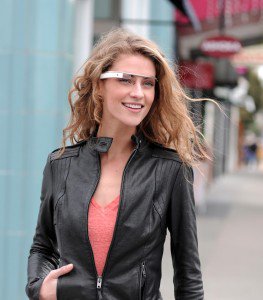Share This
Related Posts
Tags
Wearable technology
By Anca Gagiuc on Feb 22, 2013 in Technology
Ready for a tiny wearable phone? How about augmented reality glasses that feed you information about whatever catches your eye? We’re on the cusp of an era when wearables, like glasses and watches, will replace the functions of the world’s most popular gadget – your smartphone.
Apple has been experimenting with the iWatch, a device made of curved glass that would work on iOS platform. What might once have been something out of a James Bond film or Inspector Gadget cartoon could be part of our everyday existence later this year. Our iPhones are already attached to our hands most of the time, so why shouldn’t we just strap them to our wrists? Less chance of a broken screen, coming right up!
And Google co-founder Sergey Brin was spotted on the NYC subway testing the company’s latest project – the Google Glasses. That sighting, along with a recent leak from Apple about a 100-person design team working on a wristwatch-style project (Forbes), hint that the advent of this exciting new era is nigh.
Google is close to sending its glasses prototype to development. The augmented reality glasses are said to transmit app information and data about the surroundings on a small display, directly into the wearer’s right eye.
In terms of watches, Google built the Microsoft-Timex DataLink in 1995, a device that allowed users to load Outlook information onto the watch, thus having handy the personal phone book. The SPOT watch (Smart Personal Objects Technology) is launched in 2004, taking a significant step in making personal objects more intelligent. It lasted on the market only until 2008, but it had its fans.
 Source: cdn.slashgear.com on Pinterest
Source: cdn.slashgear.com on Pinterest
The iWatch rumor has credibility because the maker of the ultra-tough Gorilla Glass that is used in most of the smartphones and other portable devices today, Corning, announced that a difficult engineering challenge has been solved: they managed to create Willow Glass, a bendable glass that can twine without breaking. Work on the flexible glass has been an ongoing process for the past ten years, says Pete Bocko, the CTO for Corning Glass Technologies.
“You can certainly make it wrap around a cylindrical object and that could be someone’s wrist,” Bocko said. “Right now, if I tried to make something that looked like a watch, that could be done using this flexible glass.”
A major question is whether the iWatch will be a standalone item, iPhone extension/accessory or replacement?
In order to get the functionality of the iPhone, we might need to attach a device close to the size of the existing iPhone to our wrists. Siri, Maps, iCloud, iTunes, are just a few of the integrated apps that need the A6 processor, Retina display, LTE, GPS and Bluetooth 4.0 radios; all of these require space and space, in a smartwatch, is a challenge.
Analysts that specialize in wearable technology feel that Apple is already in the wearable space, via its partners that make accessories for the iPhone. Plus, its executives seem to have an interest in this technology: Tim Cook has been seen measuring his daily physical efforts with a Nike FuelBand that shares data wirelessly with an iPhone app. Bob Mansfield, Apple’s senior vice president for technologies, is known to have a thing for devices that connect to the iPhone through Bluetooth, something both Nike FuelBand and Jawbone Up do.
I tend to believe that whatever Apple will launch will be underestimated at first. Then it will follow the course each Apple device took and greatly impact our lives and the fortune of the investors.
Chronologically, 2013 is the year when a new device should welcome a new member in the family from Cupertino. In 2007 we were introduced to the iPhone, three year later the iPad kept all eyes on the California company; 2013 seems like the year for something new, something envisioned before, but not yet materialized; the iWatch could be that device. Stay tuned.

